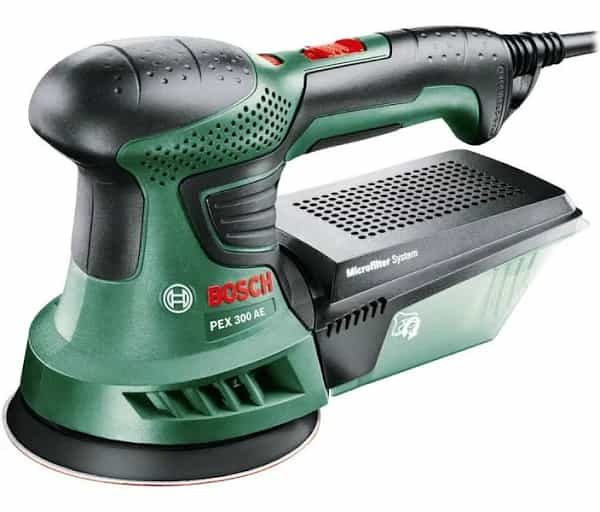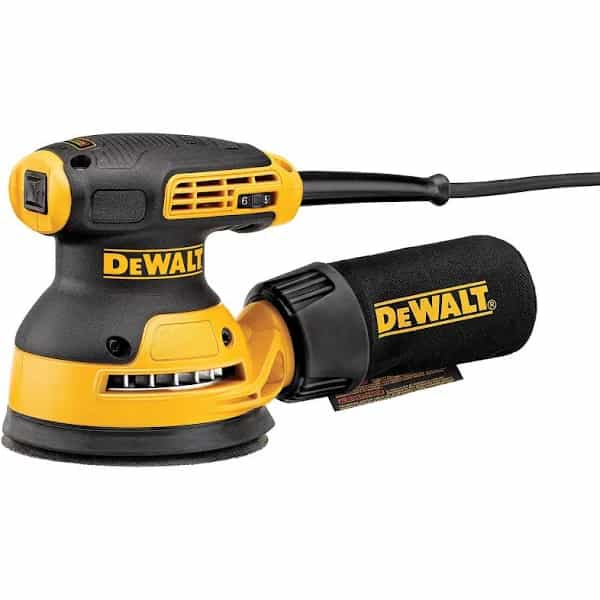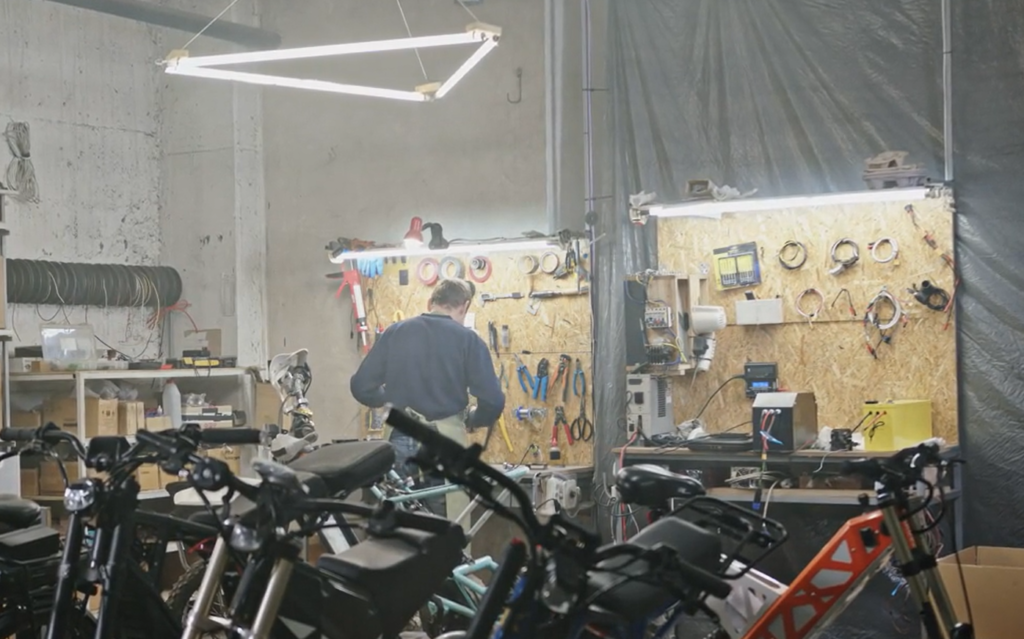The growing diversity and appeal of tools means that Belgians remain passionate about DIY. This trend is also reflected in the electric sander sector, which is attracting an ever-increasing number of enthusiastic users.
If you're also thinking of taking the plunge, choose your moment of decision wisely. You'll find a wide variety of models available in specialist shops.
Orbital and eccentric sanders are among the most popular options, and at first glance they have a lot in common. But are they designed for the same uses? How exactly do they differ? Which one should you choose?
Here is a detailed review of these instruments to help you make the right choice.
The multi-tool for woodworkers: the eccentric sander
Deciding on an electric sander is no simple task. Faced with a multitude of options, including belt, vibratory, giraffe, orbital and eccentric models, it's easy to get lost and lack clarity.
To begin with, let's introduce the main model we're interested in: the eccentric sander.

Features of the eccentric sander
Unlike the orbital model, the disc of the eccentric sander is not directly connected to the motor shaft. It is off-centre and mounted on an intermediate plate.
This feature enables the motor, which varies in power from 250 to 900 watts depending on the model, to generate a rotary movement and oscillation of the platter.
Versatile, the eccentric sander combines the advantages of vibratory and orbital equipment, offering the possibility of carrying out a wide range of tasks.
You can select the size of the plate and the grit of the abrasive (finer or coarser) depending on the size of the job.
There are two categories of eccentric sanders:
- The compressed air sander (pneumatic sander): the device can be used with both hands. It's ideal for treating large surfaces.
- Hand sander : Compact and ergonomic, it's designed to fit in one hand, making it ideal for smaller, finishing tasks.
Eccentric sanders are usually fitted with a vacuum connection or dust bag, which makes cleaning easier by preventing the build-up of debris.
For what types of project?
It excels at roughing, polishing and finishing, making it indispensable for DIY enthusiasts.
An eccentric sander is an ideal option for completely restoring a large piece of wooden furniture, with the exception of sanding the corners. However, make sure you choose the right abrasive for the desired result: a coarse grit for stripping and a finer grit for a smooth finish.
What's more, this type of sander works just as well for polishing large metal surfaces, particularly for removing rust.
An eccentric sander can also be used to shine or polish a car's bodywork. All you need is a polishing pad or buffing disc.
Orbital sanders: the perfect finishing touch
In a way, it is a member of the family of its eccentric counterpart, from which it draws inspiration for some of its features.

Description of the orbital sander
The orbital sander takes its name from the rounded shape of its rotating pad, which generates a circular orbital movement and to which the abrasive (sandpaper) is attached. The diameter of the pad can also be selected according to the size of the surface to be worked. In general, a 150 diameter plate is pre-installed on these machines.
These devices are equipped with a motor with a capacity of between 200 and 800 watts.
What kind of work is it suitable for?
This mobile device is also capable of polishing various types of material, from wood to metal, including plaster and plastic.
The orbital sander is particularly ideal for stripping paint from furniture or stripping the bodywork from a car.
Very easy to handle and lightweight, it works equally well on curved and flat surfaces, but is less effective at sanding edges. What's more, the rounded shape of the sanding surface makes it difficult to reach the corners of a wall or a piece of furniture that's hard to reach (in this case, a triangular sander would be more appropriate).
This tool, with its rotating disc, is particularly recommended for finishing tasks. It supports belt sanders, which are used for stripping and surface sanding.
Painters are often fans of certain models of sander, such as the DEWALT. Lighter and easier to handle than a giraffe sander, which can be quite bulky, it guarantees an equivalent quality of finish. For example, it's ideal for sanding raked surfaces or removing wallpaper paste.
DEWALT is a renowned manufacturer and marketer of power tools and construction equipment for a variety of materials. The company develops innovative products such as electric sanders, saws, drills and other precision tools designed to improve the efficiency and quality of work for professionals and DIY enthusiasts. Thanks to its expertise and commitment to innovation, DEWALT is recognised worldwide for the performance, durability and robustness of its products, meeting the needs of users in demanding working environments.
What is the difference between orbital and eccentric sanders?
Although there are obvious technical distinctions, these two types of sander are surprisingly similar, almost to the point of confusion. As well as sharing a comparable visual appearance, they have one significant quality in common: their great versatility.
There are a number of similarities.
Each of these tools is designed for both coarse sanding jobs, to be carried out quickly, and more precise, meticulous sanding.
Orbital sanders and eccentric sanders are also sometimes fitted with a telescopic arm. When they have this accessory, they are known as "giraffe sanders".
The main differences between these two sanding machines are as follows
The main distinction lies in the type of movement they make.
The eccentric sander generates both rotation and an oscillating movement. Thanks to its constant circular trajectory, it also generates a vibration, enabling faster surface treatment.
The orbital device produces exclusively rotary orbital movement (it pivots on its axis).
This, of course, influences the final appearance of the surface to be polished. Offering great precision and remarkable manoeuvrability, although less powerful, the orbital sander is ideally suited to finishing work when you're aiming for a uniform appearance.
In general, it also costs more than an eccentric sander, which is recommended for intensive work and stripping. Although the latter also offers the option of more delicate sanding, as well as polishing and buffing functions. Orbital sanders are highly prized by professionals, particularly painters, because they provide a superior quality finish thanks to their rotation, surpassing other types of sander (with the exception of polishers).
Here is a table comparing the differences between orbital and eccentric sanders:
| Features | Orbital sander | Excentric Sander |
|---|---|---|
| Movement | Rotary orbital movement only | Combination of rotation and oscillating movement |
| Surface rendering | Highly precise, ideal for uniform finishes | Faster for stripping and intensive work |
| Power | Less powerful, suitable for finishing work | More powerful, suitable for heavy-duty work |
| Use | Finishes, ideal for professional painters | Stripping, polishing |
| Prices | Generally more expensive | Less expensive |
| Versatility | Versatile, but mainly used for finishing | Highly versatile, suitable for various types of sanding |
| Accessories | Sometimes fitted with a telescopic arm (giraffe sander) | Sometimes fitted with a telescopic arm (giraffe sander) |
| Vibrations | Less vibration | More vibrations |
| Benefits | High precision, remarkable manoeuvrability | Faster surface treatment speed |
| Disadvantages | Less effective for intensive work | Less precise for highly detailed finishes |
All you need to know about eccentric and orbital sanders.
With the exception of corner sanding, the eccentric sander is capable of performing every task: from rough sanding of convex and flat surfaces to meticulous finishing work, including polishing and buffing.
The orbital sander also excels for its versatility, despite its lower power rating. Ideal for sanding small surfaces, it stands out for its ability to deliver a perfect finish, without any marks!
It's up to you to choose what's best for you, taking into account your personal requirements!




